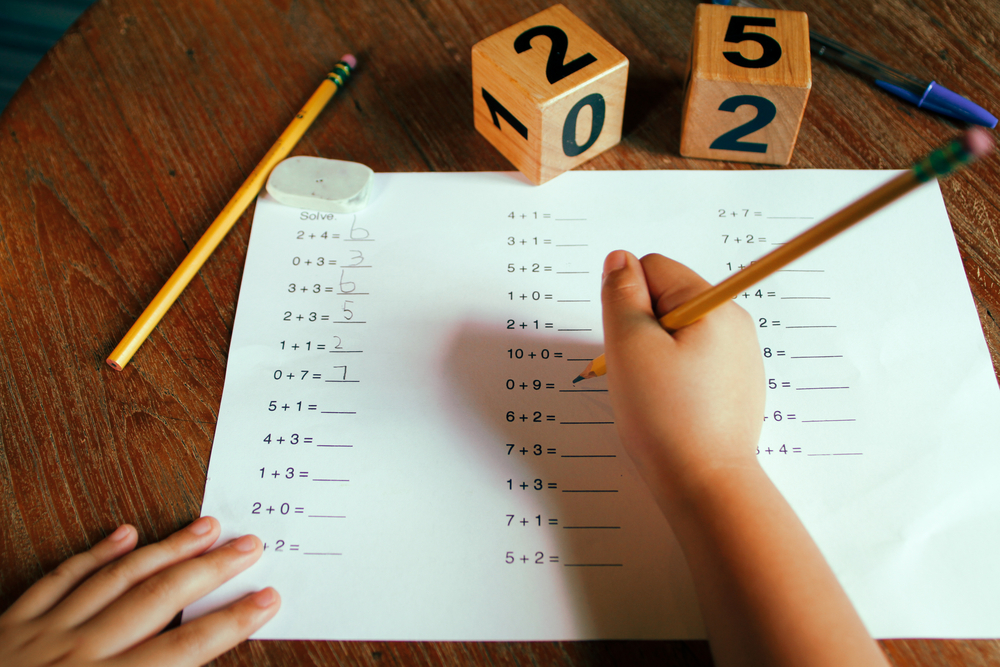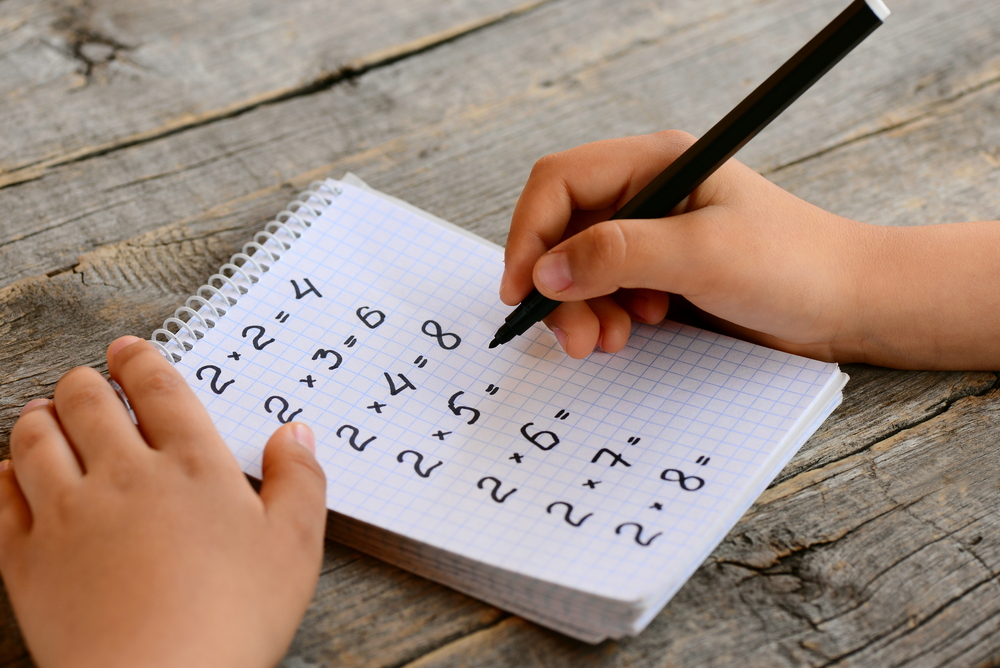Animal Classification Normal Worksheets for Ages 5-7
7 filtered results
-
From - To
Unlock the wonders of the animal kingdom with our engaging Animal Classification Normal Worksheets for Ages 5-7! Designed specifically for young learners, these worksheets introduce children to essential concepts of classifying animals based on their characteristics. Featuring colorful illustrations and interactive activities, students will love sorting animals into groups such as mammals, birds, reptiles, and more. Perfect for preschool and early grade classrooms, these worksheets stimulate critical thinking, improve observational skills, and enhance foundation knowledge in science. Foster curiosity and a love for learning about nature as children explore the diversity of living creatures with our fun and educational resources!
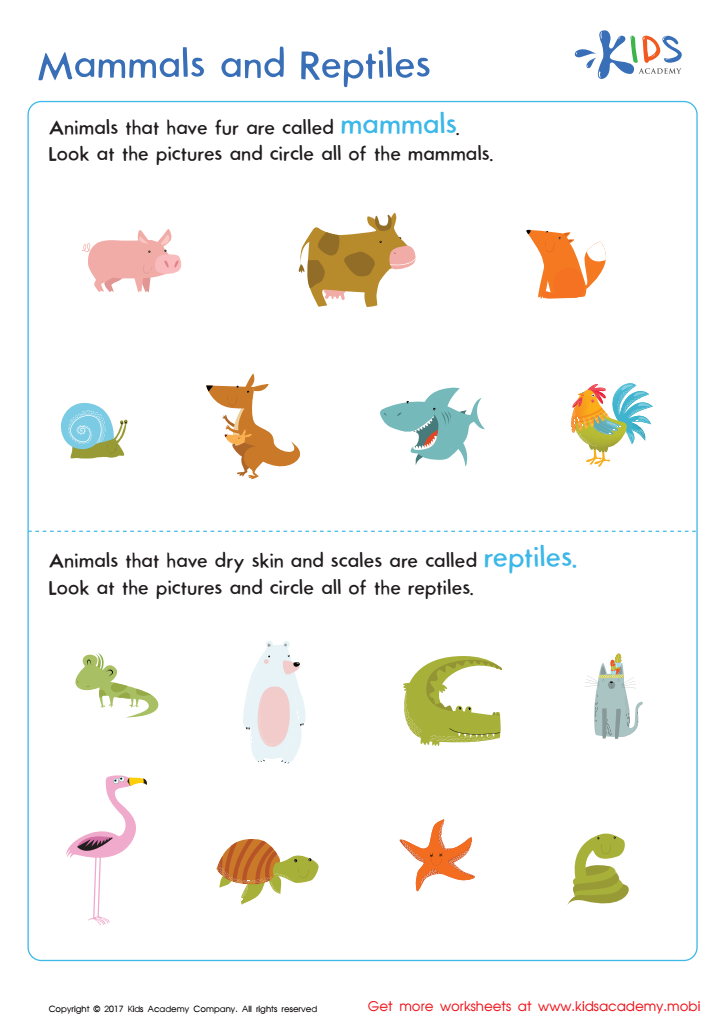

Mammals and Reptiles Worksheet
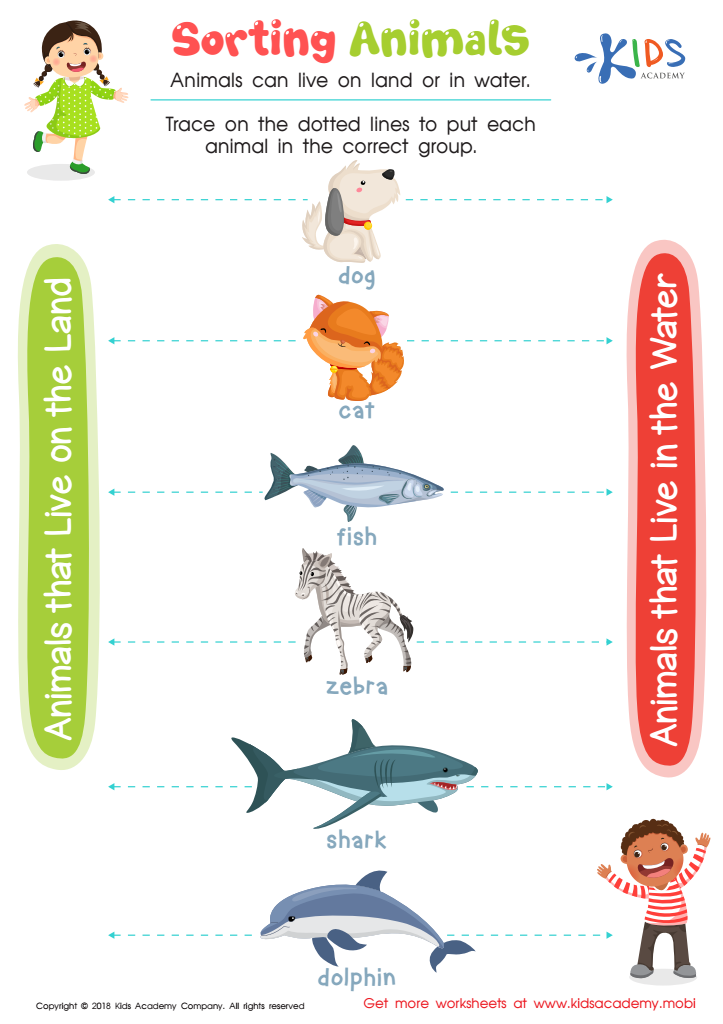

Sorting Animals Worksheet
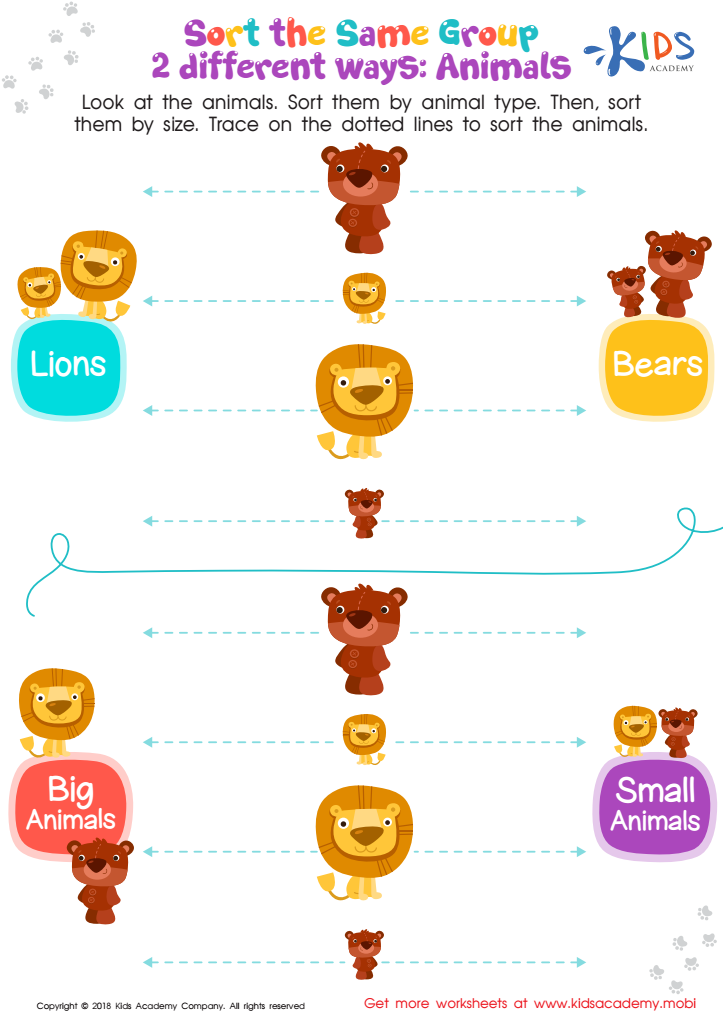

Sort the Same Group 2 Different Ways: Animals Worksheet
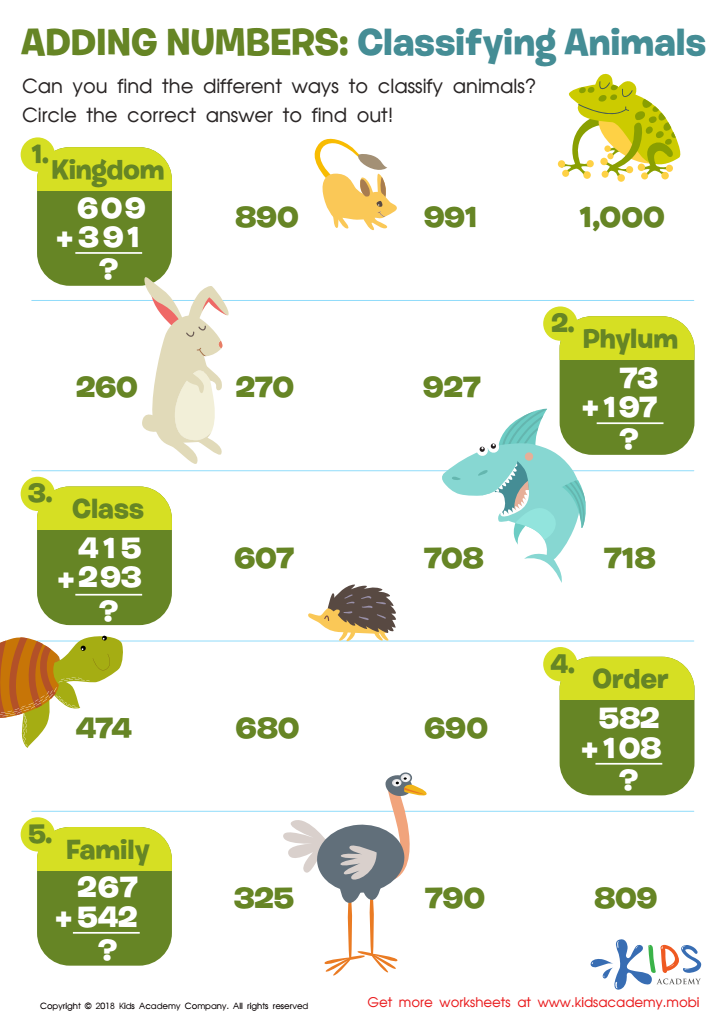

Adding Numbers: Classifying Animals Worksheet
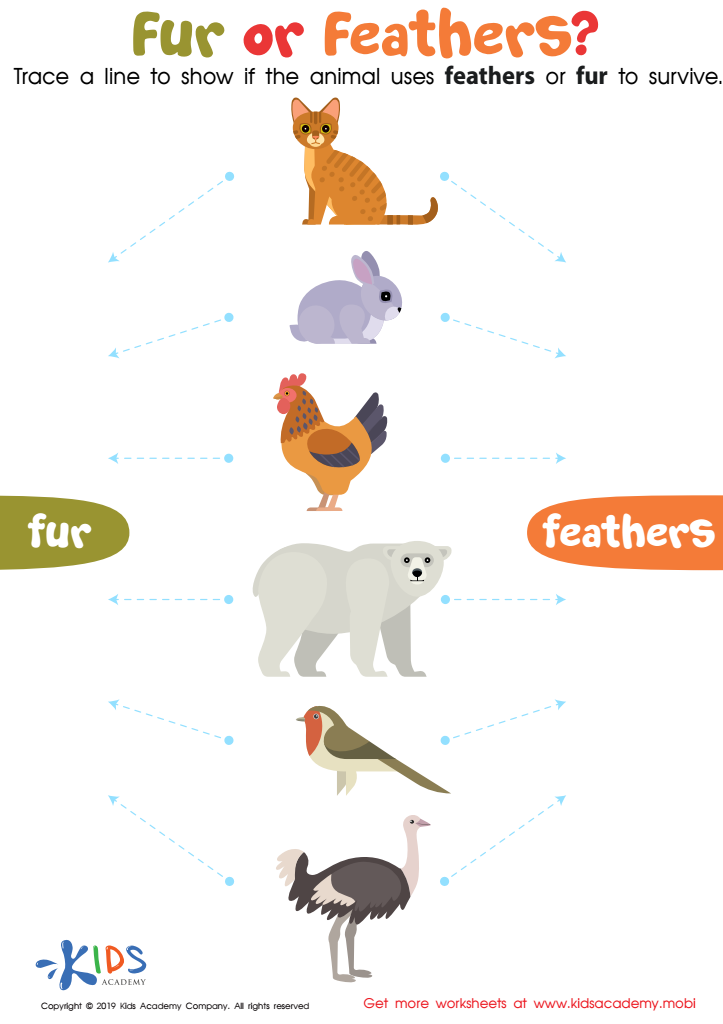

Fur or Feathers? Worksheet
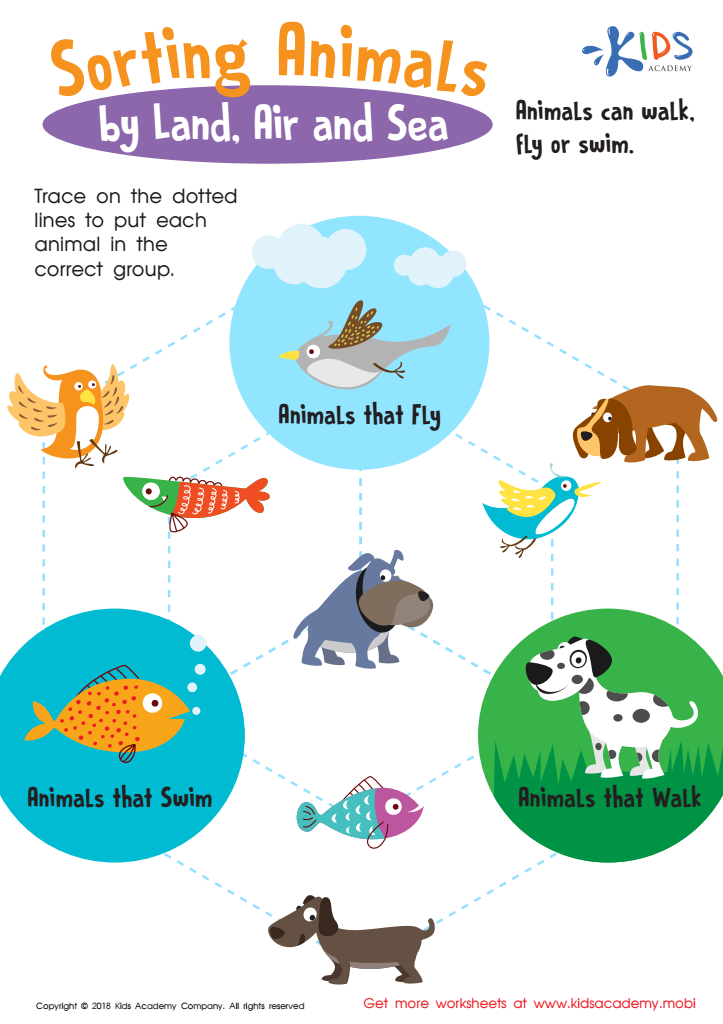

Sorting Animals by Land, Air and Sea Worksheet
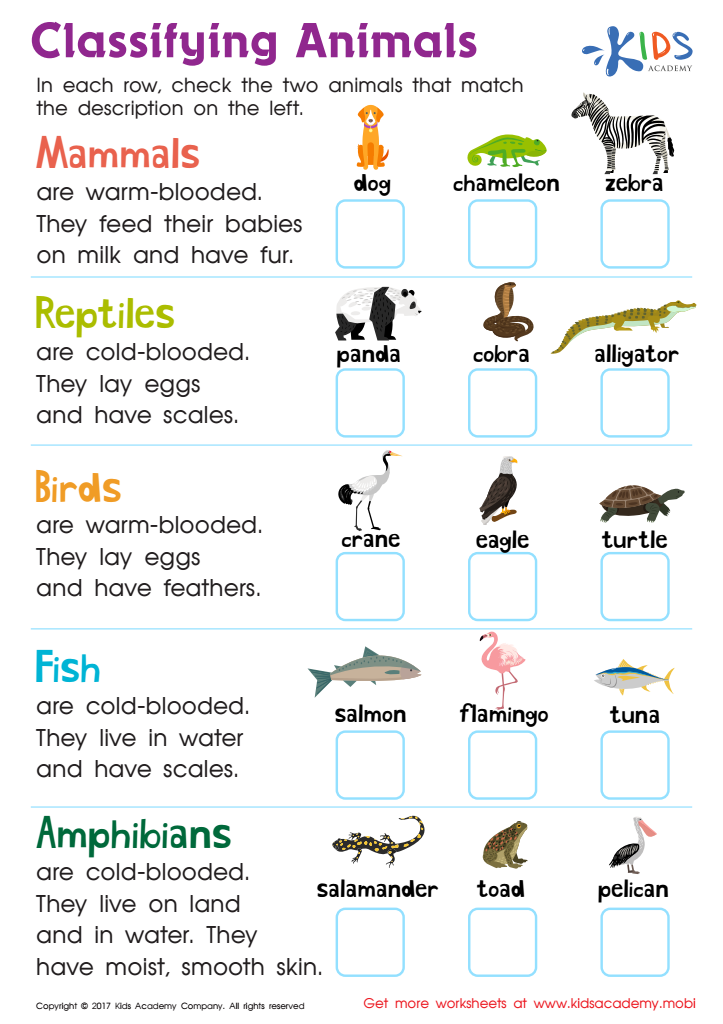

Classifying Animals Worksheet
Animal classification is a fundamental concept that sparks curiosity and wonder in young children aged 5-7. Understanding how animals are grouped—from mammals and birds to reptiles and amphibians—helps kids appreciate the diversity of life on Earth. Parents and teachers should care about teaching this topic because it encourages critical thinking and observation skills.
When children learn to classify animals, they engage in hands-on activities that promote exploration and inquiry. This learning enhances their observational skills, as they look closely at animals' features, habitats, and behaviors. It ignites their enthusiasm for science and fosters a lifelong love for nature.
Additionally, discussing classification provides an opportunity to teach children about ecosystems and the importance of biodiversity, inspiring stewardship of the environment. It can lead to productive conversations about habitats and animal behaviors, enticing kids to ask questions and seek answers.
Furthermore, this knowledge can serve as a foundation for more complex scientific concepts in the future. By investing time in this playful exploration of animal classification, parents and teachers empower children with the skills to understand and appreciate the natural world, enriching their education and creating engaged, informed future stewards of the planet.

 Assign to My Students
Assign to My Students







